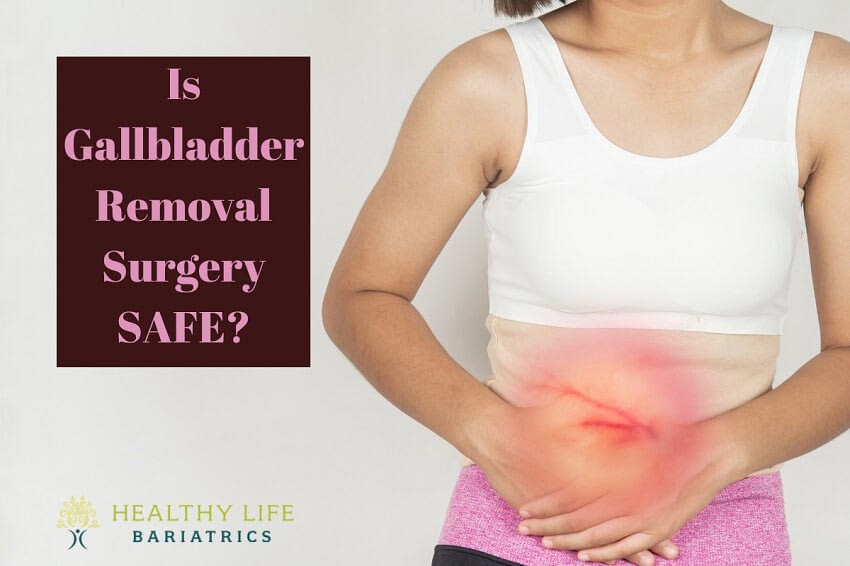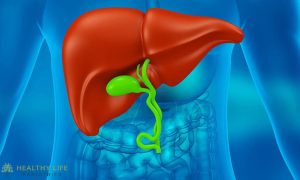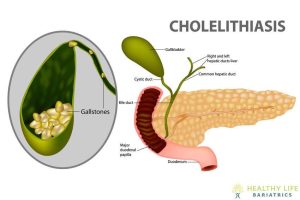
Gallbladder removal surgery is a life-saving procedure that is performed on approximately 300,000 individuals annually. Otherwise referred to by the complex term cholecystectomy, this operation usually follows a series of gallstone attacks. But is the procedure safe? Can you live without a gallbladder and still enjoy a healthy standard of living? These are excellent questions, which we will do our best to answer here.
In this article, we will discuss the reason people undergo gallbladder surgery, how the surgeons perform the procedure, and the aftereffects, which include whether or not the procedure is safe.
If you don’t want to wait until the end of the article and want to learn more about cholecystectomy, schedule a consultation with world-renowned general surgeon Doctor Babak Moeinolmolki of Healthy Life Bariatrics by calling (310)807-2378.
What is Gallbladder Removal Surgery and What is its Purpose?
It seems odd that a surgeon would want to remove one of your body’s organs, doesn’t it? Imagine if your doctor informed you of the need to remove your liver or one of your kidneys. You would likely balk and ask for a second opinion.
Yet hundreds of thousands of individuals willingly have their gallbladders removed every year. In doing so, they are able to enjoy a longer, healthier life.
To explain why it helps to understand what the gallbladder does and when you should remove it.
What is the Gallbladder and What Does the Organ Do?
The gallbladder is an organ shaped like a small pear that is located underneath your liver in your upper right abdomen. The function of the organ is to help you digest fatty foods. The gallbladder’s role is to store and release bile.
What is Bile?

Bile is a digestive fluid that helps with digestion. The fluid is composed of around 95% water but also contains a number of dissolved endogenous solid constituents. These include bile salts, cholesterol, amino acids, bilirubin phospholipid, steroids, vitamins, heavy metals, and environmental toxins, among several other ingredients.
Bile is created by the liver and stored in the gallbladder. The gallbladder secretes bile during digestion to help your body break down fatty acids.
The gallbladder can sometimes develop issues, the most common among them being gallstones.
What are Gallstones?
Gallstones are hardened deposits of digestive fluid. The stones are located in the gallbladder and are usually made of cholesterol. In many cases, gallstones do not cause any symptoms.
Gallstones vary wildly in size. They can be as small as a grain of rice or as large as a golf ball. Some people develop a single gallstone while others may develop several at the same time.
When gallstones cause symptoms to develop, gallbladder removal surgery is often required.
What Are Common Symptoms of Gallstones?
Gallstones typically cause symptoms when the hardened deposits cause a blockage in the ducts of the gallbladder. Symptoms can include sudden and rapidly intensifying pain in the right upper abdomen or center of the abdomen. Some gallstone sufferers instead experience back pain between the shoulder blades or right shoulder, along with nausea or vomiting. The symptoms can last between several minutes to several hours in duration.
When is Gallbladder Surgery Necessary for Gallstones?
Before you undergo an operation such as gallbladder removal surgery, you should visit your doctor for an accurate diagnosis. A doctor visit is warranted if you experience abdominal pain that is so intense you find it difficult to sit still or get comfortable and if you experience jaundice. Jaundice is a yellowing of the skin and whites of the eyes. You may also experience a high fever with chills.
All of these symptoms indicate that the gallstone attacks are severe. Gallbladder removal surgery might be the next step.
Why Do Gallstones Form?
Before visiting a doctor, many sufferers of gallstone attacks wonder if there might be a natural method of dissolving the stones. Or if there might be a natural remedy that can prevent more from forming, thus alleviating their symptoms. Doctors are unsure as to why gallstones form in the first place.
You can attempt to alleviate gallstone symptoms or prevent gallstones from forming by not skipping meals, losing weight slowly, eating high-fiber foods, and maintaining a healthy weight. These actions have proved to have a positive effect on gallstone formation.
The general belief is that gallstones develop when your bile contains an abundance of cholesterol. Bile usually contains enough chemicals to dissolve any cholesterol excreted by the liver. The problem arises when the liver excretes more cholesterol than your bile is able to dissolve. The excess cholesterol can then form into crystals, which have the potential to become gallstones.
When the gallbladder does not empty correctly or when your bile contains an overabundance of bilirubin, gallstones can also develop. The gallbladder may not empty completely or often enough, which can make the bile concentrated. Bilirubin is a chemical produced when your body breaks down red blood cells. Certain conditions can cause an excess of bilirubin to be produced, which include liver cirrhosis, blood disorders, and biliary tract infections.
Are There Certain Risk Factors for Gallstones?

Gallstones are more likely to form in females aged forty and above. Other risk factors include being Native American or Hispanic of Mexican Origin, being overweight or obese, and living a sedentary lifestyle. Some pregnant women have a high likelihood of developing gallstones, as are those who eat a high-fat, high-cholesterol diet with low amounts of fiber.
If you have a family history of gallstones, certain blood disorders such as leukemia, or sickle cell anemia, and if you take medications that contain estrogen, you are also at an elevated risk of developing a gallstone condition.
What are Potential Complications for Gallstones?
If gallstone attacks go untreated, a number of complications can occur, some of them life-threatening.
Gallbladder Inflammation
When a gallstone becomes lodged in the neck of the gallbladder, inflammation can result, leading to severe pain and fever.
Bile Duct Blockage
Gallstones that are large enough can block the tubes used by the gallbladder or liver to secrete bile to the small intestine. When a blockage occurs, pain, bile duct infection, and jaundice can result.
Pancreatic Duct Blockage
The pancreatic duct is a tube that the body uses to send pancreatic juices through the digestive tract to aid in digestion. The duct runs from the pancreas to the common bile duct before entering the duodenum. The duodenum is the first part of the small intestine that lies immediately beyond the stomach. A gallstone can cause blockage to this duct, which can lead to pancreatitis.
What is Pancreatitis?
This condition causes intense, constant pain in the abdomen that usually requires hospitalization.
Gallbladder Cancer
If you have a history of gallstones in your family, you are at an increased risk of gallbladder cancer. However, because this type of cancer is incredibly rare, even with an elevated risk assessment, the likelihood of you forming the disease is still infinitesimally small.
When is Gallbladder Removal Surgery Necessary?
Now that we have covered the purpose of the gallbladder and potential complications, let’s return to gallbladder removal surgery and why it might be necessary.
Doctors recommend gallbladder removal surgery when you suffer from repeated gallstone attacks. At this stage, the attacks are usually severe. Gallbladder inflammation or pancreatic inflammation may also be present.
The surgery aims to remove the gallbladder entirely, which should eliminate all symptoms and complications.
How is Gallbladder Removal Surgery Performed?

The cholecystectomy (back to that complicated term) is most commonly performed laparoscopically. The surgery is minimally invasive and carries only a small risk of complications. In most cases, you can return home the same day following this common procedure.
By ‘laparoscopically,’ this implies that the operation is performed using laparoscopic surgery. The surgeon makes tiny incisions that function as entry points for a tiny video camera and special surgical tools. Four small incisions are made around the abdomen for this purpose.
Laparoscopic cholecystectomy is performed using general anesthesia, which means you will be unaware during the procedure. The anesthesia drugs are administered through a vein in your arm. When the drugs take effect, the healthcare team will insert a tube down your throat to assist with breathing. The surgeon then will begin the operation.
After the incisions are made and the laparoscopic tools are inserted, the surgeon will view the operation on a video monitor positioned in the operating room. The surgical tools are then used to remove the gallbladder.
Once the gallbladder is taken out, the surgeon may perform imaging tests to determine if gallstones are still present in the bile duct. The imaging analyses may involve X-rays or ultrasounds. The incisions are then sutured closed before you are whisked away to the recovery area. The entire procedure takes around two hours.
You can usually return home the same day, though occasionally an overnight stay in the hospital is necessary. Once you arrive home, you will be able to walk unaided, as well as eat and drink without issue. You can expect to be fully recovered in around a week’s time.
How Do They Perform Open Gallbladder Removal Surgery?
The other method of performing a cholecystectomy involves open surgery, which may be necessary if scar tissue from a previous operation prevents the surgeon from using laparoscopic surgery.
An open cholecystectomy is known as the traditional method. The surgeon makes a six-inch incision in the abdomen below the ribs along the right side. The muscle and tissue are pulled back to reveal the gallbladder, whereby the organ is removed. The incision is then sutured closed. A traditional cholecystectomy takes around two hours to complete.
While laparoscopic surgery usually has patients returning home the same day, open surgery may require you to spend up to two days in the hospital to recover. Once you arrive home, you can expect to spend four to six weeks fully recovering.
Is Gallbladder Removal Surgery Safe?
Now to the ultimate question: Can you safely live without a gallbladder?
The aim of gallbladder removal surgery is to relieve the pain and discomfort caused by gallstones. The cholecystectomy prevents gallstone attacks from occurring, thus relieving you of symptoms.
Most people go on to live healthy lives without experiencing a single digestive problem following gallbladder removal surgery. While we are born with a gallbladder, the organ is not essential to healthy digestion.
Some people develop loose stool after gallbladder removal, but this issue typically resolves with time. You should discuss any changes in digestion or bowel habits with your doctor after undergoing a cholecystectomy.
Most people return to work quickly, though it can take a week or more to return to your normal activities.
So, the answer to the question of safety is yes, gallbladder removal surgery is entirely safe and may be lifesaving if gallstone attacks are troubling you.
Receive an Official Diagnosis by Calling Healthy Life Bariatrics
If you suffer from gallstone attacks in or near Los Angeles, California, you are encouraged to call Healthy Life Bariatrics. Doctor Babak Moeinolmolki is board certified in minimally invasive laparoscopic surgery. The doctor has decades of experience performing procedures such as gallbladder removal surgery with precision and care.
You can learn more by scheduling a consultation with Doctor Moeinolmolki. Dial (310)807-2378 to receive an official diagnosis, get all your questions answered, and obtain all the information you need regarding insurance, medical financing, and the benefits of this life-saving general surgery.


